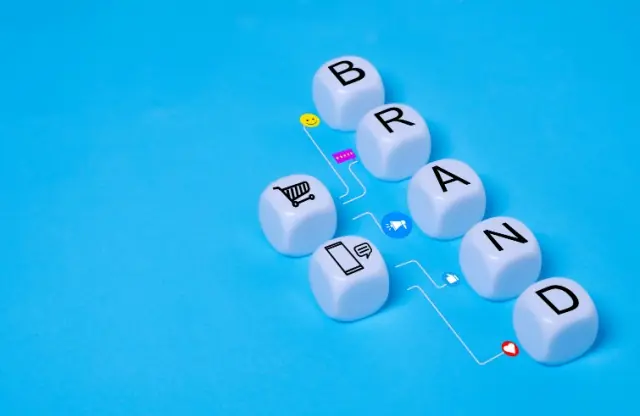
Heritage marketing is all about celebrating a brand’s history and using it to build meaningful connections with customers. For a family business, heritage marketing can be a powerful tool. It connects entrepreneurial storytelling with tradition, allowing businesses to weave their past into their present-day branding. By focusing on legacy preservation, family businesses can highlight their long-standing values and traditions. This approach resonates with audiences who appreciate authenticity and stability. In today’s fast-paced digital world, heritage marketing also offers a refreshing take on branding, combining nostalgia with modern marketing strategies. And, more importantly, it shows that tradition can be a key part of growth.
In this article, we’ll explore how heritage marketing benefits family businesses by preserving tradition while moving forward. We’ll dive into topics like the unique appeal of family-owned brands, key elements of heritage marketing, and its commercial benefits. Plus, we’ll share tips on incorporating heritage into modern marketing strategies. Ready to strengthen your brand’s legacy and charm new customers? Let’s get started.

What is Heritage Marketing?
Heritage marketing, or family business storytelling, focuses on a brand’s history and traditions, making these elements a key part of its identity. For family-owned businesses, it’s a way to use their unique legacy to build trust and authenticity with customers. By highlighting their roots, heritage marketing keeps these brands relevant today while staying true to their values. It’s especially helpful for multigenerational businesses that want to showcase their legacy and stay competitive.
This strategy taps into family business traditions and uses storytelling to connect with customers emotionally. Businesses blend their history with modern branding, positioning themselves as a brand and keepers of tradition. This mix helps them remain competitive in a changing market.
Heritage marketing doesn’t just celebrate the past. It connects generations, offering insights into how companies can grow while staying true to their origins. This approach keeps branding authentic, relatable, and appealing to a broad audience.

The Unique Appeal of Family-Owned Businesses
Family-owned businesses stand out from larger corporations because of their unique appeal. A key strength is the emotional and trust-based connection they build with customers. Family business owners, being personally invested, often provide a more personalized experience. This approach fosters trust and loyalty. Customers feel a deeper connection to these businesses since they can easily recognize the family traditions and values in the brand. This emotional bond results in long-term customer relationships. Which is something large companies often find difficult to replicate.
Heritage marketing enhances this appeal by highlighting the history and legacy of the family business. It enables brands to emphasize their roots and long-time presence. In turn, this helps strengthen customer loyalty. By using storytelling and content marketing, family businesses can connect with consumers emotionally while keeping their sense of continuity. This mix of legacy and innovation offers an advantage, allowing family businesses to preserve their heritage while staying relevant to modern trends.

Key Elements of Heritage Marketing for Family Businesses
Heritage marketing for family businesses involves key strategies that connect a brand’s past with its present, creating a sense of trust and legacy. Below are 10 essential elements that businesses can integrate into their marketing campaigns.
1. Storytelling
Storytelling is at the heart of heritage marketing. By sharing generational business stories, brands create an emotional connection with their audience. Campaigns can focus on how the business began, important milestones, or stories of family business traditions to build a compelling narrative.
2. Brand Heritage
Highlighting a brand’s long history and achievements can establish credibility. Family businesses can incorporate family business history into their content marketing, showcasing their role as a trusted business that has stood the test of time.
3. Authenticity
Being authentic helps build trust. Marketing efforts should stay true to the values and mission the business was founded on. Authenticity in campaigns makes customers feel they are interacting with a genuine brand rooted in real traditions.
4. Traditional Values
Brands should emphasize the values that define their legacy. These values can be woven into all aspects of marketing, ensuring a consistent message that reflects the family business’s long-held principles.
5. Innovation and Continuity
While rooted in tradition, heritage marketing should also embrace innovation. Highlighting how the business has evolved while maintaining its core values, can show both adaptability and continuity.
6. Generational Involvement
Showcasing multiple generations involved in running the family business adds to its legacy. Brands can create campaigns focusing on the transition of leadership or the involvement of younger generations in keeping family traditions alive.
7. Corporate Responsibility
Family businesses often play a vital role in their communities. Highlighting corporate social responsibility initiatives or community engagement activities shows the brand’s commitment to more than just profits.
8. Legacy Preservation
Heritage marketing campaigns can focus on how the brand preserves its legacy for future generations. This includes highlighting efforts to keep traditional methods, recipes, or craftsmanship alive, ensuring long-term brand relevance.
9. Nostalgia Marketing
Tapping into nostalgic memories associated with the brand helps connect with customers on an emotional level. This can be done through visuals, old advertisements, or reviving classic products.
A great example of this is Coca-Cola’s “Share a Coke“ campaign, launched in 2011, replaced the iconic logo on bottles with popular names. This simple change sparked nostalgia by encouraging people to find and share a Coke with friends or loved ones. The campaign reminded consumers of the emotional moments they’ve shared over a Coke, tapping into personal memories and building a strong emotional connection. This approach made the campaign a global success by linking the product with cherished experiences, reinforcing customer loyalty through nostalgia.
10. Visual Identity
A brand’s visual elements, like logos and packaging, often hold historical significance. Using these elements in modern marketing ensures consistency while giving a nod to the brand’s rich history.
These elements collectively help heritage marketing resonate with audiences by blending tradition with modern approaches, keeping family businesses relevant while preserving their unique legacy.

Commercial Benefits of Heritage Marketing
Heritage marketing offers family-owned businesses several advantages, enabling them to connect with customers on a deeper level and stand out in a competitive market. By leveraging a brand’s history, traditions, and values, businesses can enhance customer loyalty and increase brand value. Here are 10 commercial benefits of heritage marketing to explain this more simply.
1. Increased Customer Loyalty
Heritage marketing builds a strong emotional connection between customers and the brand by emphasizing family business traditions. Customers feel more engaged when they trust a business that has stood the test of time, making them more likely to remain loyal.
2. Enhanced Brand Value
Leveraging a brand’s heritage creates a sense of trust and authenticity, boosting brand equity. Customers perceive family businesses as stable and reliable, which directly translates into higher brand value.
3. Stronger Market Differentiation
In a crowded market, heritage marketing sets a family business apart by showcasing its unique legacy. This kind of brand positioning, focused on long-standing values and traditions, differentiates it from competitors that lack this history.
4. Improved Brand Positioning
A family business with a rich history can position itself as a leader in its industry. This credibility, built through decades or even centuries of operation, can help a company secure a favorable position in the market.
5. Trust and Authenticity
Heritage marketing emphasizes authenticity, which is critical for building trust with customers. Consumers value genuine, transparent brands, and highlighting a company’s historical background can strengthen this trust.
6. Stronger Connection to Family Values
Highlighting shared family values and traditions can attract customers who appreciate those ideals. This creates a deeper emotional engagement, strengthening the bond between the brand and its audience.
7. Consistency Across Generations
Heritage marketing reflects family business continuity, showing that the company has maintained its vision and values across generations. This consistent messaging reassures customers of the brand’s reliability.
8. Nostalgia Appeal
Tapping into nostalgia allows heritage brands to evoke positive memories, helping to enhance customer relationships. It also helps attract new generations who connect with the legacy and values of the business.
9. Increased Engagement
Customers engage more with heritage brands because they feel a part of the brand’s journey. By sharing stories of family business history, companies foster a sense of involvement and belonging with their audience.
10. Legacy Preservation
Heritage marketing emphasizes legacy preservation, highlighting a family business’s commitment to maintaining traditions while adapting to modern trends. This approach ensures that the business remains relevant while honoring its past.
Examples of Successful Heritage Marketing Strategies in Family-Owned Businesses
Tata Group (India)
Founded in 1868, Tata Group has grown into one of India’s largest conglomerates. The company emphasizes its legacy of ethical practices, social responsibility, and innovation, making it a symbol of trust for generations.
Warburtons (UK)
A family-run bakery established in 1876, Warburtons uses its long-standing family heritage in its marketing campaigns. The company promotes its tradition of quality baking, gaining a strong reputation as a trusted household name in the UK.
Godrej (India)
Godrej, founded in 1897, has leveraged its heritage in sectors like consumer goods and real estate. The brand emphasizes its longstanding commitment to innovation and sustainability while preserving traditional values.
Levi’s (USA)
Founded in 1853, Levi’s emphasizes its rich history and the iconic 501 jeans in its marketing campaigns. The brand combines heritage with innovation, maintaining its status as a timeless and culturally relevant brand globally.
Parle Products (India)
Established in 1929, Parle is a leading Indian confectionery brand, famous for Parle-G biscuits. Its heritage marketing focuses on family business traditions and trust, with nostalgic ads that remind consumers of their childhood.
Ford Motor Company (USA)
Founded by Henry Ford in 1903, Ford is one of the oldest family-owned automakers. It leverages its history in innovation, particularly the assembly line, to emphasize its pioneering role. Ford’s marketing highlights its legacy of innovation and craftsmanship, blending tradition with modern automotive advancements.
Toyota (Japan)
Founded in 1937 by the Toyoda family, Toyota is a globally recognized brand. Its heritage marketing focuses on quality and reliability, blending traditional craftsmanship with modern technology to maintain trust as a family-owned company.
Mahindra & Mahindra (India)
Founded in 1945, Mahindra & Mahindra is an Indian multinational conglomerate. Its marketing emphasizes innovation while staying rooted in family business traditions, highlighting leadership in agricultural vehicles and a strong legacy.
These examples show how heritage marketing helps preserve the values, traditions, and legacies of family-owned businesses while making them relevant in modern times.

How to Incorporate Heritage into Modern Marketing Strategies
Blending heritage with modern marketing strategies allows businesses to retain their authenticity while remaining competitive in a digital-first world. To achieve this, companies must balance tradition with innovation. Below are 10 actionable tips to incorporate heritage marketing into modern campaigns:
1. Leverage Storytelling
Use entrepreneurial storytelling to communicate the history and legacy of your brand. Share multigenerational business insights through blogs, videos, or social media. This will help customers feel connected to your journey.
2. Use Digital Platforms
Digital tools, like social media and content management systems, offer excellent ways to share family enterprise tales. Brands can post about historical milestones and behind-the-scenes stories, keeping their audience engaged across platforms.
3. Incorporate Nostalgia in Ads
Nostalgia marketing taps into the emotional connections customers have with a brand’s history. Incorporating nostalgic elements in modern ads, such as vintage logos or products, evokes positive memories and reinforces loyalty.
4. Update Visual Identity
Revamping traditional logos or packaging for a contemporary look can balance legacy with modernity. Highlight elements from your brand’s past while incorporating current design trends for a cohesive look that appeals to today’s audience.
5. Collaborate with Influencers
Engage influencers to tell your brand’s heritage story from a fresh perspective. Influencer collaborations can blend modern digital trends with your heritage, making your story more relatable to younger audiences.
6. Create Exclusive Content
Offer limited-time content or products that reflect key moments in your brand’s history. Special editions or anniversary products can generate buzz and reinforce legacy preservation while engaging modern consumers.
7. Host Digital Events
Organize online events like virtual tours of your brand’s history or behind-the-scenes webinars, allowing stakeholders to interact with your heritage in a modern, digital context.
8. Highlight Key Milestones
Incorporate significant historical milestones in your marketing efforts. Show how your brand has evolved while remaining true to its core values, creating a bridge between past and present.
9. Use Data for Personalization
Leverage digital analytics to personalize heritage-based campaigns. Tailor marketing messages to different audience segments, connecting your history with their unique preferences and behaviors.
10. Innovate Products with Tradition
Integrate traditional craftsmanship or methods into new product lines. Show customers how your brand stays relevant by innovating while staying rooted in its heritage.

The Importance of Consistency Across Platforms
Maintaining consistency across platforms is critical for effective heritage marketing. A unified brand story, whether told through a website, social media, or print materials, ensures customers see a cohesive image of your brand. When showcasing heritage, authenticity is key—consistency helps reinforce trust and loyalty. Brands should ensure that the values embedded in their heritage are reflected in every interaction with stakeholders. This approach fosters a stronger connection with audiences while preserving brand equity across digital and traditional channels.
Incorporating heritage into modern marketing isn’t just about looking back—it’s about using your history to shape your brand’s future.

Heritage Marketing by Synapse: Preserving Family Business Legacy
Heritage marketing is a powerful tool for family-run businesses, helping them connect deeply with customers by showcasing their unique legacy. It reinforces trust, loyalty, and authenticity while positioning businesses as reliable and timeless in a fast-changing market. By embracing their history and blending it with modern strategies, family-owned brands can continue to grow and thrive. This approach allows them to preserve their traditions for future generations. As their stories evolve, using heritage marketing helps them stay relevant and impactful.
At Synapse, one of India’s oldest and best creative agencies, we specialize in heritage marketing tailored for family-owned businesses. Our services include Legacy Books that visually narrate your rich history, Graphic Novels that turn your family business journey into engaging stories, and Custom Murals that depict key milestones. We also offer Family Films, Interactive Exhibits, and Founder Portraits to immortalize your legacy. Let us help you bring your family enterprise tales to life and connect deeply with your audience.
Visit our Family Business page to learn more. Reach out to us via WhatsApp or email at tanmay.m@synapse.co. You can also call us at 1800 121 5955 (India) or visit our website and fill up the Contact Form. We’ll get back to you shortly.







